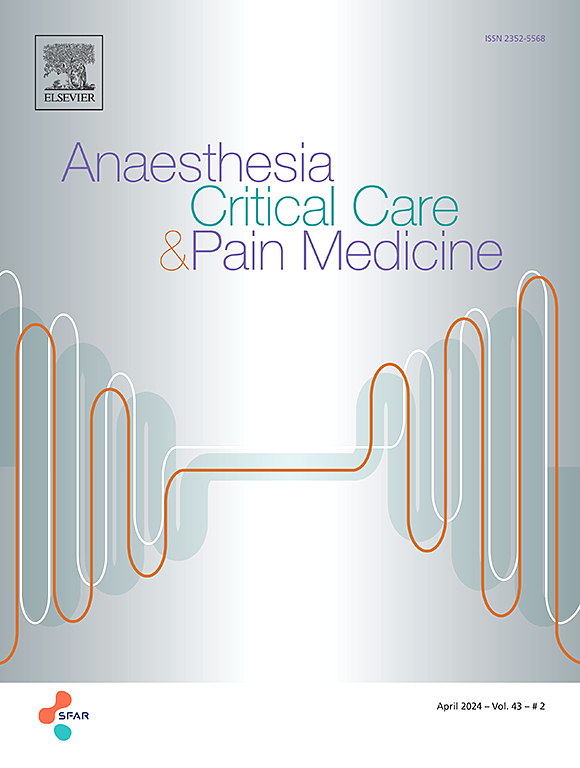德尔菲研究为剖宫产后住院患者疼痛评估制定一个核心结局集。
IF 4.7
3区 医学
Q1 ANESTHESIOLOGY
引用次数: 0
摘要
背景:剖宫产疼痛的研究报告了不同的结果,限制了数据汇集。本研究旨在采用德尔菲共识方法,为剖宫产术后住院患者疼痛评估制定一套核心结果集,用于研究和临床实践。方法:范围评估确定了37个初始结果,另外2个结果来自焦点小组。在两轮德尔菲调查中对这些结果进行评分,该调查由焦点小组完成,该小组由范围综述研究的作者(n = 9)、其他专家(n = 5)和近期生活经验的患者(n = 7)组成。得分在1-5分的李克特量表上,1-2分是“关键的包容性”;3是“重要但不关键”,4-5是“有限重要/无效”。如果投票后有超过70%的利益相关者推荐,则纳入结果。第三轮虚拟会议确定了域名,并进一步进行了几轮在线调查,确定了具体措施。结果:第一轮专家14人,患者7人。第二轮包括12名专家和4名患者(76%应答)。参加虚拟会议的专家11人,患者3人(67%),完成4项在线调查的焦点组比例分别为67%、52%、67%、76%。最后一个领域包括疼痛强度:休息时、运动诱发时和疼痛缓解时;疼痛干扰;阿片类药物总消费量;以及母体的不良影响。就12项域名措施达成一致。结论:下床是剖宫产后运动诱发疼痛最相关的功能活动。这一核心结果集可以应用于未来的研究和临床实践。本文章由计算机程序翻译,如有差异,请以英文原文为准。
Delphi study to develop a core outcome set for inpatient pain assessment after cesarean delivery
Background
Studies of cesarean delivery pain report different outcomes, restricting data pooling. This study aimed to develop a core outcome set for inpatient postoperative pain assessment after cesarean delivery to use for research and clinical practice, using the Delphi consensus methodology.
Methods
A scoping review identified 37 initial outcomes, with 2 additional outcomes developed from a patient focus group. These were rated in a two-round Delphi survey process completed by a panel consisting of authors of studies identified from a scoping review (n = 9), supplemented with other experts (n = 5) and patients with recent lived experience of post cesarean delivery pain (n = 7). Scores were collected usinga 1−5 Likert scale, 1–2 being ‘critical for inclusion’; 3 being ‘important but not critical’, and 4–5 of ‘limited importance/invalid’. Outcomes were included if recommended by ≥70% of stakeholders after voting. A third-round virtual meeting determined domains, and several further rounds of online surveys finalizedthe specific measures.
Results
Round one included 14 experts and 7 patients (100% response). Round two included 12 experts and 4 patients (76% response). The virtual meeting was attended by 11 experts and 3 patients (67%), and the 4 online surveys were completed by 67%, 52%, 67%, and 76%. The final domains included pain intensity: at rest, movement-evoked, and pain relief; pain interference; total consumption of opioids; and maternal adverse effects. 12 measures for domains were agreed upon. Getting out of a hospital bed was selected as the most relevant functional activity for movement-evoked pain after cesarean delivery.
Conclusions
This core outcome set may be applied to future research and clinical practice initiatives to evaluate post cesarean delivery pain.
求助全文
通过发布文献求助,成功后即可免费获取论文全文。
去求助
来源期刊

Anaesthesia Critical Care & Pain Medicine
ANESTHESIOLOGY-
CiteScore
6.70
自引率
5.50%
发文量
150
审稿时长
18 days
期刊介绍:
Anaesthesia, Critical Care & Pain Medicine (formerly Annales Françaises d''Anesthésie et de Réanimation) publishes in English the highest quality original material, both scientific and clinical, on all aspects of anaesthesia, critical care & pain medicine.
 求助内容:
求助内容: 应助结果提醒方式:
应助结果提醒方式:


